Contractor Comment: Average yields and high costs begin to bite
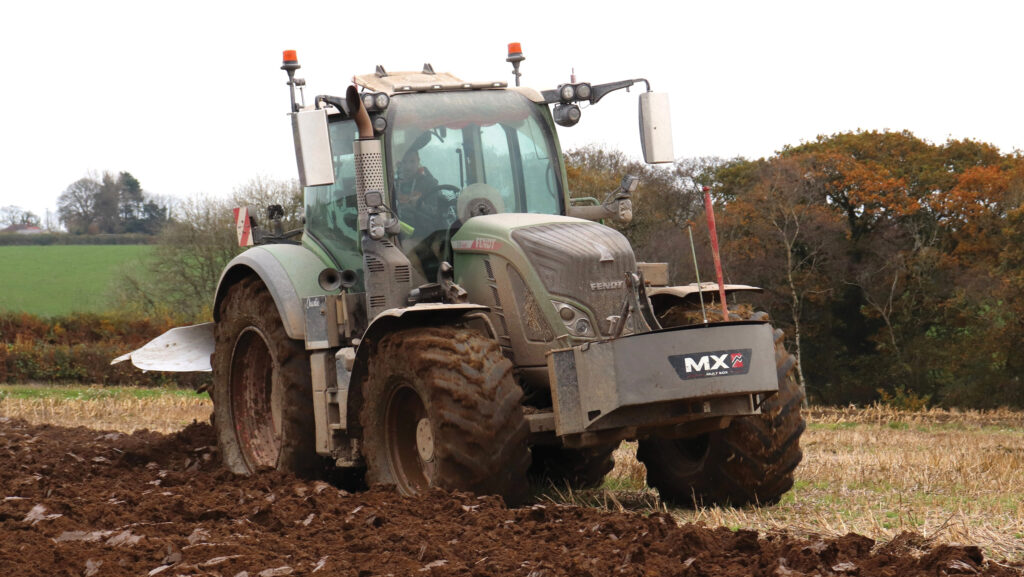 © Andrew Faulkner
© Andrew Faulkner Elliot Stevens, who runs Okehampton-based contracting firm Cropmech, had an uninspiring harvest, with wet weather hampering workflow.
Elliot, who works along with his father, Mark, says: “Overall, the cereal harvest was OK, although it certainly didn’t feel like that when we were in the thick of it.
“Wet weather, as usual, was the main culprit. We had to dry every load, down from between 16% and 25% moisture content, while some of the straw was turned up to eight times.
“We failed to string together three consecutively dry days. Combining was so frustrating. We just couldn’t get going.”
See also: Contractor Comment: Holding on to tractors until prices drop
Their three combines only managed to cut 850ha, compared with an average season of 1,100ha.
About the contractor
Mark and Elliot Stevens’ Cropmech business provides mainstream agricultural services, haulage, and telehandler hire from its base in Okehampton, Devon.

Elliot Stevens © Andrew Faulkner
Business facts
Cropmech, Huish Barton, Merton, Okehampton, Devon
- Main services Maize and grass silage (1,820ha), combining (1,100ha), spraying (14,000ha), square baling (15,000 120x70cm bales), lime spreading (10,000t), drilling (2,000ha), straw processing (650 hours)
- Other 800ha farming (share, contract, farm business tenancies); 16-strong haulage fleet; telehandler hire; grain storage/marketing (60,000t); grain sampler sales
- Staff 12 full-time (farming), plus another 26 (other parts of the business)
They were offered more outside work, but in the end had to prioritise their own crops and simply ran out of time.
Elliot says: “Combining flat-on-the-deck spring barley at 4ha/day in mid-September isn’t fun on any level.”
Even given easier conditions, Elliot reckons contract harvesting rates should be up at about £160/ha rather than their current £128/ha, but the local market won’t stand it.
“There’s very little margin in contract combining, yet it’s a service we have to offer our customers.
“For the high capital cost of the kit, we just can’t get enough acres through the harvesters in the small Devon fields to make the job stack up.”
Baling
It was a similar down-on-output story for the firm’s two balers – a new MF2234 and older MF2260.
Typically, this pair would pump out an annual 15,000 bales of silage, hay and straw.
But in 2024, they only managed just over 10,000, largely down to the lower number of available baling days.
Easing the frustration, the final wheat grain yields were more pleasing – 10t/ha on the 200ha of rented ground near Swindon, 7.9t/ha around Cropmech’s base near Okehampton.
The other crops were more average: winter beans came in at a disappointing 3t/ha and the oats at 7.2t/ha.
The majority of the wheat is sold throughout the winter, processed either by the firm’s modified Hay Buster H-1130 straw processor into ground wheat, or through the roller mill at Risdon Mill, and shipped to local homes in the South West.
A bonus in 2024 is that the Hay Buster was also operated for 15-24 hours a day for five weeks from mid-September, grinding 6,500t of grain for a local feed mill that was having its own hammer mills replaced.
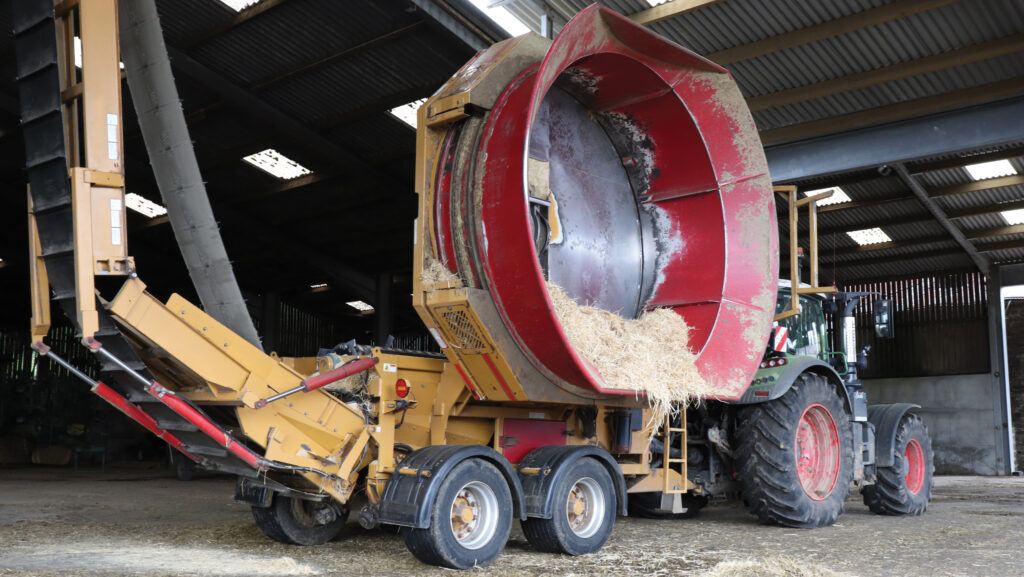
Hay Buster H-1130 straw processor © Andrew Faulkner
Maize
On the maize job, yields – adjusted to 30% dry matter (DM) – exceeded expectations, ending up at 40t/ha.
Consistently humid conditions are the only explanation for the better performance, according to Elliot, as the crop certainly hadn’t overdosed on heat units.
Sold to local dairy farmers, the maize has proven to be a reliable break crop and, in terms of margin, comparable to a first wheat.
Another unexpected 2024 positive came from the firm’s 3m Erth overseeder.
The initial estimate was that this seeder would stitch about 200ha of herbal leys into permanent pasture for customers under the Sustainable Farming Incentive (SFI).
That proved way out. The 3m unit ended up putting in 1,350ha, and, though the area will be down in 2025, it’s still predicted to cover 600ha-plus.
Not surprisingly, this workload has already taken its toll – frame cracking, press roller shaft failure, hopper mountings past their best – so some serious Erth beefing will be required ahead of next season’s campaign.
Major breakdowns
At the time of writing, the potentially most serious breakdown was yet to be diagnosed.
One of the Fendt 724s lost propulsion when tankering, and, worst case, it could mean a complete new Vario unit at around £8,000-£10,000.
The hope, however, is that it will be a more minor transmission issue.
Especially frustrating is that Elliot had priced up this particular 8,000-hour 724 – Cropmech runs five 724s in total – against a new one a couple of months ago, but he eventually decided to postpone.
Not really a breakdown, but the firm’s 11-year-old Kemper header has also been under scrutiny.
Like the Fendt 724, replacement was postponed ahead of the 2024 maize harvesting campaign, with Elliot reluctant to shell out £100,000 on a new equivalent.
About £4,000 was spent on a pre-season refurb, and the header went well.
However, conscious of not wanting to push his luck, he has been scouting around for alternatives, including being an underbidder on a written-off Claas Orbis that made £56,000.
The one-year-old example was partially burnt out, but it would’ve only needed a spend of £2,000-£4,000 to get it back to working order.
“It’s just a matter of being patient until something decent comes up at the right money,” says Elliot.
As for servicing, Cropmech reckons running maintenance, repairs and parts on the firm’s three combines totted up to about £15,000.
Nothing major, just blades, bearings, slats and other wearing components.
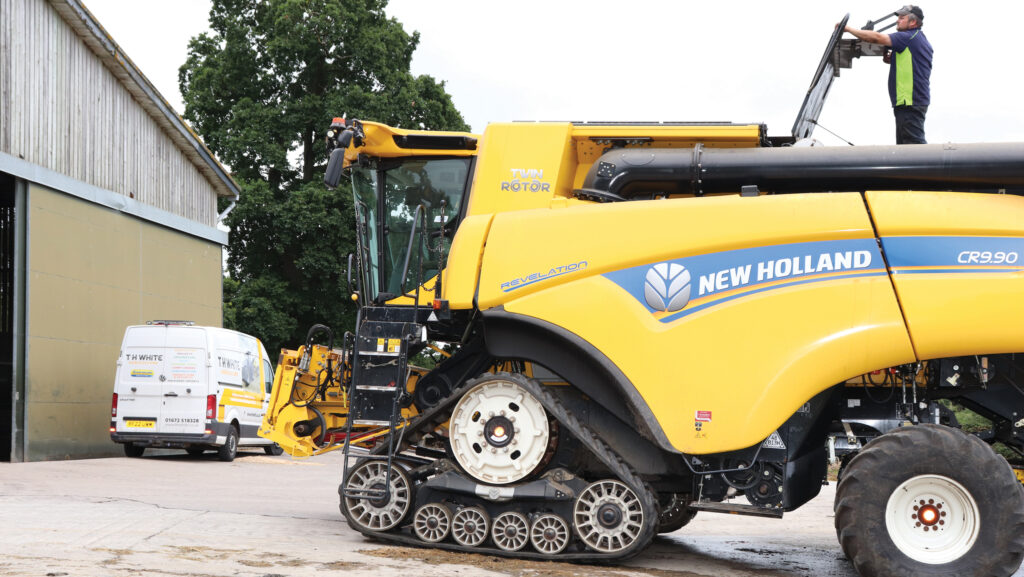
© Andrew Faulkner
New machine arrivals
Of the recent new arrivals, arguably the stand-out item is a folding 4m Kuhn HR4030 power harrow and BTFR4030-32 seeding toolbar combination.
This joins another 4m folding front/rear unit and two other 3m combis on the cereal planting fleet.
Though sharing their 4m working width, the two folders couldn’t be more different in spec.
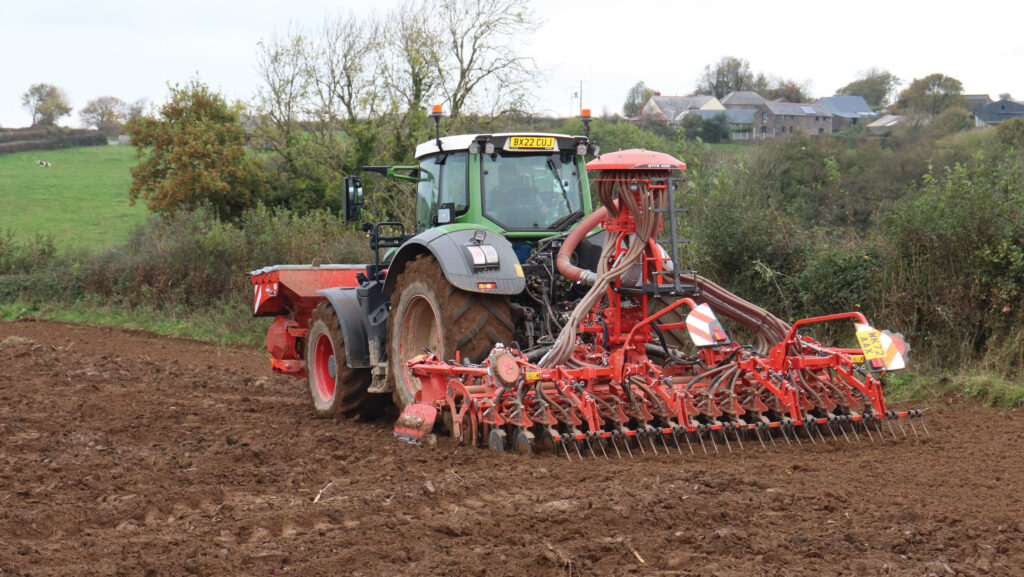
Kuhn 4m combi © Andrew Faulkner
Priced at £80,000-plus, the new Kuhn has full electric control, double-disc coulters and a hydraulically controlled levelling bar.
In contrast, the older outfit was assembled by Cropmech for about £20,000 three years ago out.
This was done with an Andrew Guest refurbed power harrow (£13,000), second-hand front tank, distributor head and coulter bar (£4,000), and another £3,000 on assorted items.
“For the first couple of days with the new Kuhn, I wondered what I’d done,” says Elliot.
“We had several initial electrical glitches, which meant it only managed 4ha/day, compared with the old machine that was still knocking out 20ha. Thankfully, it’s all sorted now.”
Planned replacements
Cropmech has a new Bateman RB35 self-propelled sprayer on order, due to arrive in the spring.
The fully specified 36m/4,000-litre model will work alongside an existing two-year-old RB35 that has had its original 24m boom stretched to 36m.
The plan is to leave the firm’s third sprayer, a 20-year-old 24m RB16, permanently based 150 miles away at Swindon.
This farm will stay on 24m tramlines, whereas much of the Devon work will move to 36m.
“It’s all about output in what seems to be an ever-shortening weather window,” explains Elliot.
“I was concerned that some of our Devon customers would be reluctant to go to 36m, but a few of them have already made the change.
“In any event, the 36m booms can still spray at 24m when required.”
The plan is to hang on to the due-to-go 9,000-hour RB26 until the new RB35 turns up, as Bateman’s estimated delivery times have been known to slip.
On the tractor front, Cropmech may look to swap in a couple of the Fendt 724s – including the 8,000-hour unit already mentioned – although this will largely depend on whether the dealer can meet Elliot’s cost-to-change target of £13/hour.
He is toying with upping the power to a 728 to match the existing 828 flagship on the second 4m drill and second baler.
However, he suspects he’ll stick with the lighter weight 724 for its greater versatility.
Also on order are a couple of new 17m Merlo models for the telehandler hire business, at least two new trucks for the haulage operation and a replacement Agri-Spread lime spreader.
So, even though 2025 was originally budgeted to be a consolidating year, planned capital investment is already heading towards £2m.
Kit list
- Tractors Fendt 828, 724 x5, 415, New Holland T7.210, T6.180
- Combines New Holland CR9.90, Claas Lexion 750TT and Lexion 550
- Forager Claas Jaguar 860
- Handlers JCB Loadall 536-60, mixed hire fleet of 7-26m machines (x15 – Merlo, Dieci and Kramer)
- Sprayers Bateman RB35 (24m/4,000-litre), RB26 (24m/3,000-litre), RB16 (24m/2,500-litre)
- Drills 3m x2 and 4m x2 combination drills, Erth overseeder, 4m Kuhn SD4000 direct drill, 6m Accord air seeder, four-row Samco maize drill (plastic), eight-row Amazone Precea 6000-2CC maize drill (with fert)
- Main other kit MF2234 and MF2260 balers, rakes x2, 9m triple mower, lime spreaders x2, straw processor, ploughs x3, fertiliser spreader, slurry tankers x2 and assorted trailers
Diversification
Fundamental to Cropmech’s success is that all its various enterprises are complementary.
The hired-out telehandlers help with farm construction projects, the truck and low loader haul ag kit to the farm at Swindon, the bulkers work for both the mill and bulk storage operations, and staff can be redirected to wherever labour is required. Symbiosis at its best.
The 60,000t of bulk storage stores are currently almost full and have benefited from the recent arrival of commercial vessels at Bideford Quay.
Also owned by Cropmech, Risdon Mill’s blending output seems to have settled at about 40,000t/year, albeit with the capacity to do more.
And there’s invariably a number of building projects on the go to keep the farm staff busy over the winter.
For starters, the aim is to get 4,000sq m of yard concrete laid over the next few weeks.
The longstanding platform telehandler hire enterprise had a busy run through the summer but has now quietened down, as National Grid can’t get on the ground for network maintenance.
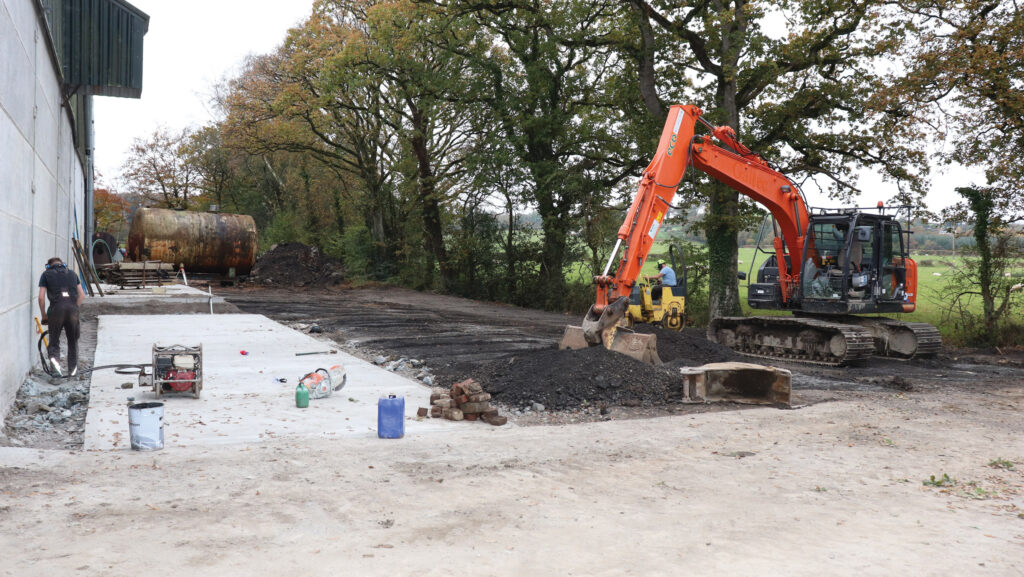
© Andrew Faulkner
Future plans
By nature an optimist, Elliot is determined not to become too disheartened by the recent Budget.
Cropmech isn’t a big landowner – it only owns 10% of its 800ha farmed area – so shouldn’t be as affected as some by the changes to inheritance tax.
In addition, the company’s main contract customers, dairy farmers, are currently faring a little better, fertiliser prices have stabilised and the fuel price seems to have settled at about 65p.
And next year’s weather might be more favourable. So, it’s far from all doom and gloom.

